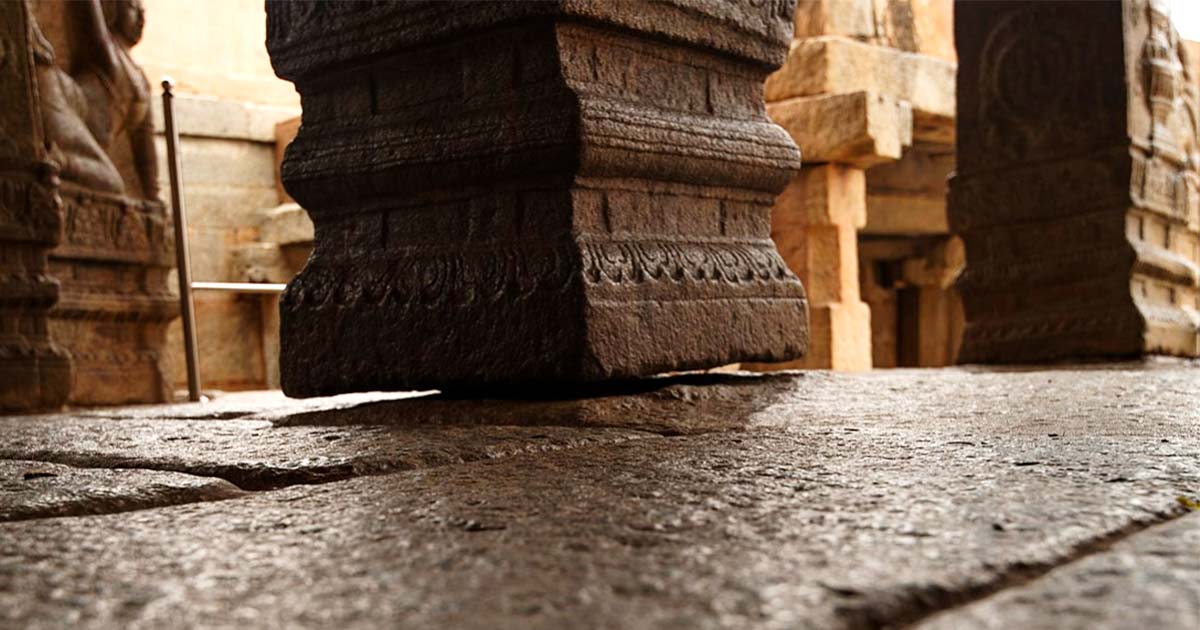The Hanging Pillar of Lepakshi Defies Gravity in Indian Temple
In the heart of Lepakshi, Andhra Pradesh, India, lies a marvel of ancient Indian architecture that has puzzled both historians and architects alike – a temple with a pillar that doesn’t completely touch the ground. This curious phenomenon has led to the temple becoming a focal point of both historical and architectural studies, raising questions about the methods and intentions behind its unconventional construction.
A Mysterious Marvel of Architecture
Veerbhadra Temple, located in the historical village of Lepakshi, is renowned for its rich tapestry of ancient murals, sculptures, and archaeological wonders dating back to the 16th century. Among its many fascinating features, the temple houses a ‘hanging pillar’ that seems to defy the laws of gravity.
This enigmatic pillar doesn’t rest fully on the ground, allowing visitors to slide a piece of cloth underneath it, leaving them in awe of this architectural anomaly. The so-called floating pillar has sparked intrigue, inspiring theories about ancient construction techniques and the purpose behind this seemingly impossible feat. The details surrounding its construction remain shrouded in mystery, inviting further exploration into this architectural wonder.
- Kailasa Temple: How Was This Massive Hindu Temple Carved out of a Single Rock?
- Krishna Butter Ball: 250 Ton Boulder that Defies the Laws of Physics
Theories and Legends Surrounding the Levitating Pillar
Several theories have emerged in an attempt to explain this peculiar structure. Some suggest that the pillar was intentionally constructed this way to demonstrate the builders’ advanced architectural skills and the stability of the temple despite the levitating pillar. Others believe it’s the result of a design flaw, a testament to the imperfections that can arise in the pursuit of architectural excellence. Regardless of its origins, the levitating pillar continues to draw in a myriad of researchers and curious visitors alike.
Adding to the air of mystery, local legends offer their own explanations. One such tale proposes that the pillar was constructed by divine beings, showcasing their celestial powers to the mortal world. Another legend speaks of a British engineer who attempted to uncover the secret behind the pillar’s support system, only to find himself unable to solve the mystery, further cementing its enigmatic nature.
Top image: The Hanging Pillar of Lepakshi. Source: Bikashrd / CC by SA 4.0.


















Comments
Another example (the most famous been the tower of Pisa) of how an engineering mistake became a tourists’ attraction. Some more are the 17th ce. Swedish ship Vasa, the Spruce Goose airplane of Hughes Aircraft, the crooked spire in the Chesterfield Parish Church England, the Garisenda Tower in Bologna etc.